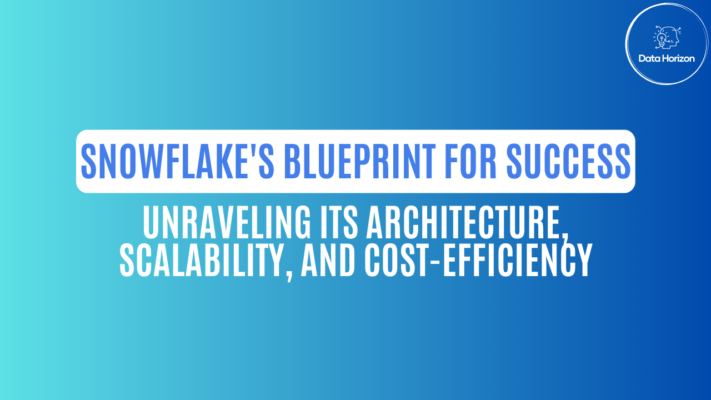In our previous blog post, we introduced Snowflake as a game-changer in the world of data warehousing. Today, we’re going to dive deeper into the inner workings of Snowflake, exploring its architecture, scalability, and cost-efficiency. If you’re ready to uncover the secrets behind Snowflake’s success, let’s get started.
Understanding the Architecture
At the heart of Snowflake’s exceptional performance is its unique architecture. Let’s break it down:
1. Multi-Cluster, Shared Data Architecture
Snowflake operates on a multi-cluster, shared data architecture. This means that compute and storage are separated, allowing you to scale each independently. Your data is stored in a highly compressed, columnar format, ensuring efficient storage and lightning-fast query performance.
2. Virtual Warehouses
Virtual Warehouses in Snowflake are the powerhouses that execute queries. They can be easily scaled up or down to handle varying workloads. This dynamic scaling ensures that your queries always run smoothly, regardless of the load.
3. Data Sharing
Data sharing in Snowflake is not just a feature; it’s a game-changer. You can securely share data with other Snowflake accounts, eliminating the need for data duplication. It’s a paradigm shift in how data collaboration works.
Unleashing Scalability
Scalability is at the core of Snowflake’s success. It offers unprecedented flexibility to scale your data operations based on your needs:
1. Automatic Scaling
Snowflake’s automatic scaling ensures that your queries run with optimal performance, even during peak workloads. You don’t have to worry about provisioning or managing additional resources—it’s all taken care of.
2. Snowflake’s Unique Data Sharing
The ability to share data seamlessly is a testament to Snowflake’s scalability. As your organization grows, Snowflake can adapt to your expanding data sharing requirements without a hitch.
3. Cost-Efficient Scaling
Snowflake follows a pay-as-you-go model. You only pay for the compute and storage you use. This means you can scale up during busy times and scale down during quieter periods, keeping your costs in check.
Cost-Efficiency That Drives Success
Snowflake’s cost-efficiency isn’t just about saving money; it’s about optimizing resources and ensuring you get the most out of your data:
1. No Need for Over-Provisioning
With Snowflake’s automatic scaling, there’s no need to over-provision resources. You can start small and let Snowflake grow with your data.
2. Reduced Management Overheads
By eliminating the need for infrastructure management and maintenance, Snowflake frees up your team to focus on what truly matters: data analytics and insights.
3. Cost Transparency
Snowflake provides transparency into your costs, allowing you to track and optimize your spending. You can see exactly where your money is going and make data-driven decisions about resource allocation.
Why Snowflake’s Blueprint Works
Snowflake’s architecture, scalability, and cost-efficiency aren’t just technological marvels; they’re the foundation of its success. Organizations worldwide are benefiting from Snowflake’s ability to handle their data operations effortlessly. It’s a platform that adapts to your needs, enhances your performance, and optimizes your costs.
In our next blog post, we’ll explore a real-world use case in the finance industry to illustrate how Snowflake is transforming data management and analytics. Stay tuned as we continue to unravel the magic of Snowflake!
If you have any questions or specific areas you’d like us to explore further in future posts, feel free to let us know in the comments below. Snowflake is a vast landscape, and we’re here to guide you through it.
